
About Andrew Cusack
 Writer, web designer, etc.; born in New York; educated in Argentina, Scotland, and South Africa; now based in London.
Writer, web designer, etc.; born in New York; educated in Argentina, Scotland, and South Africa; now based in London. read more
News
Blogs
Reviews & Periodicals
Arts & Design
World
France
Mitteleuropa
Knickerbockers
Argentina
The Levant
Africa
Cape of Good Hope
Netherlands
Scandinavia
Québec
India
Muscovy
Germany
Academica
The Rome of the West
The Churches of Glorious St. Louis, Capital of Middle America
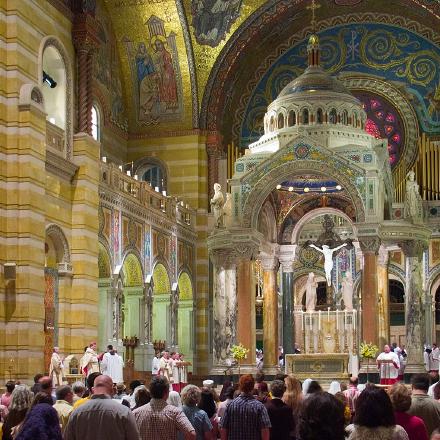
WE ON THE EASTERN Seabord often think that our cities are the last word in ecclesiastical architecture, but Mark Scott Abeln’s splendid ‘Rome of the West‘ site goes a long way towards reminding us of the great physical deposit of Western Civilization and Christian culture situated in the city of St. Louis on the Mississippi River, deep in the heart of America. To show my fellow provincial knickerbockers the richness of St. Louis’s church architecture, I’ve chosen a few photos from Mr. Abeln’s site for posting on this site. A wonderful exhibiton of America’s (which is to say Europe’s) rich cultural heritage.
The jewel in this crown of Catholic Middle America is most certainly the Cathedral Basilica of Saint Louis (above and below). The Cathedral was begun in 1907 and contains the largest collection of mosaic artwork in the world covering 83,000 square feet, the last tesserae of which was installed in 1988. The architecture of the basilica features a number of styles, from the Romanesque Revival exterior to the Byzantine plan and interior, and even contains a chapel designed in the Viennese Reconstructionist style.
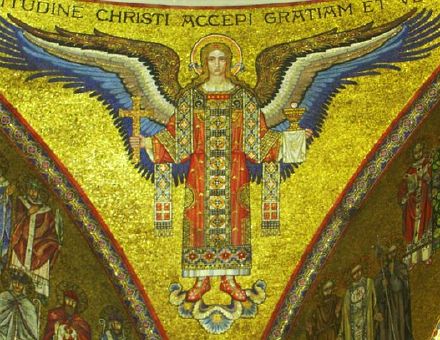
Above, some of the splendid mosaic work in the Cathedral Basilica of Saint Louis. Below, a general view of the interior. I have to say I have mixed feelings about fixed pews in cathedrals in general, but definitely feel they’re inappropriate in large churches of Byzantine design such as this.
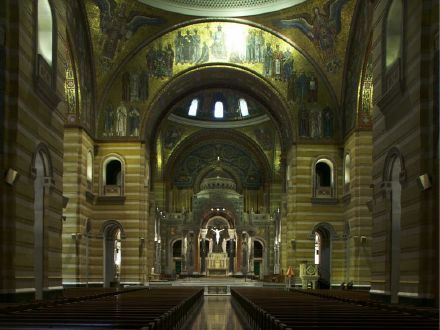
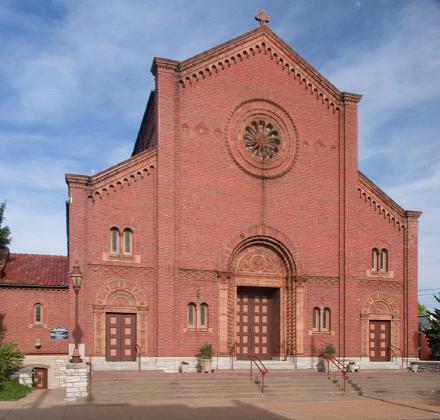
Above and below, the Church of Saint Ambrose, in the Hill neighborhood of St. Louis.
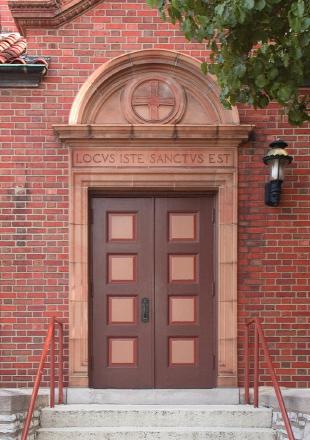
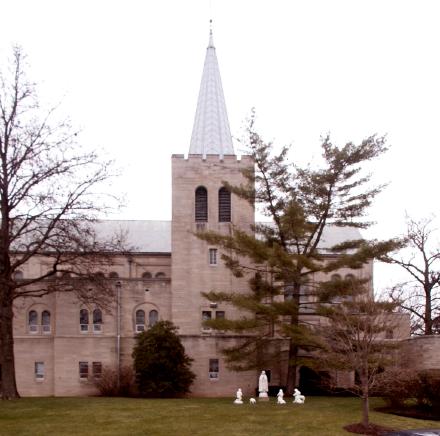
The Annunziata Church, designed in a modern English-country style, in Ladue, Missouri.
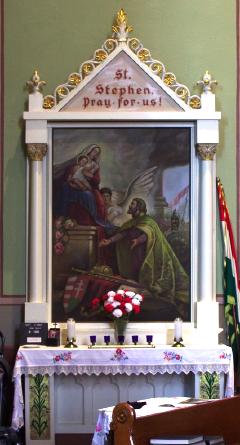
The Church of St. Mary of Victories has an altar dedicated to St. Stephen, the first Apostolic King of Hungary. Appropriately, they also have an image of the Blessed Emperor Charles, who was the last reigning Apostolic King of Hungary (as Karoly IV).
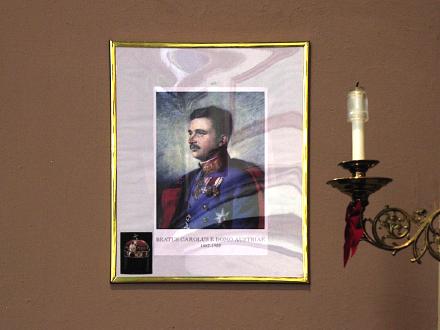
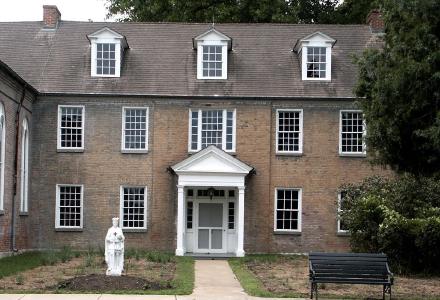
Above is the convent of Old St. Ferdinand’s Shrine in Florissant, Missouri. Mother Duchesne (Saint Rose Philippine Duchesne) lived here, and under the altar of the church are relics of Saint Valentine (yes, that Saint Valentine). Mr. Abeln informs us that Florissant is one of the oldest settlements in Missouri and that all the streets in the Old Town are named after saints.
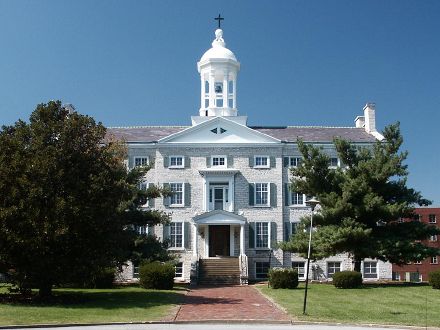
This is Old Saint Stanislaus Seminary, also in Florissant, Missouri. Sadly, the Jesuits decamped from Old St. Stanislaus in 1971 and sold the campus. (Doesn’t that sound familiar? C.f. Matt Alderman on the Culinary Institute of America). It’s now a Pentecostal ‘college of evangelism’.
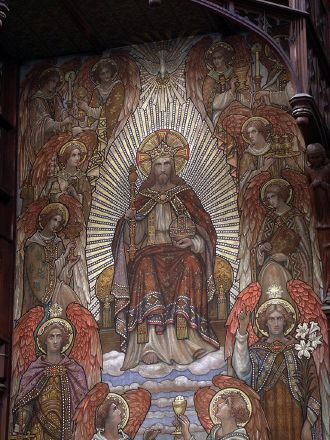
The splendid reredos image of Christ the King from the Church of Saint James the Greater in Dogtown, St. Louis.
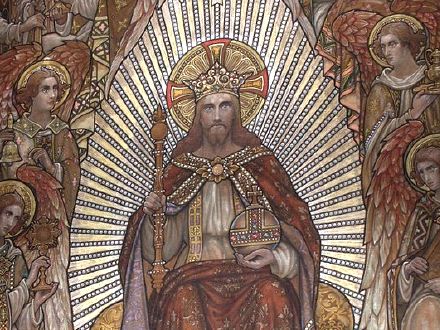
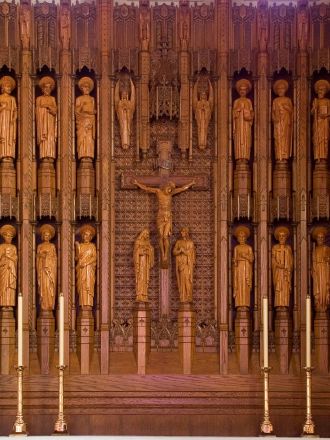
The reredos in the Church of Saint Michael the Archangel in Shrewsbury, Missouri.
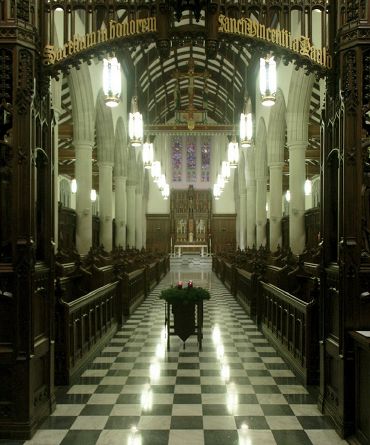
Also in Shrewsbury is the very English Chapel of St. Vincent de Paul, located in a former seminary now housing Archdiocesan offices. They should give this to Saint Louis Abbey, the English Benedictine monastery in St. Louis currently stuck with an opprobrious circular modern church. Another great image taken by Mr. Abeln is of the Chapel’s many side altars for daily masses.
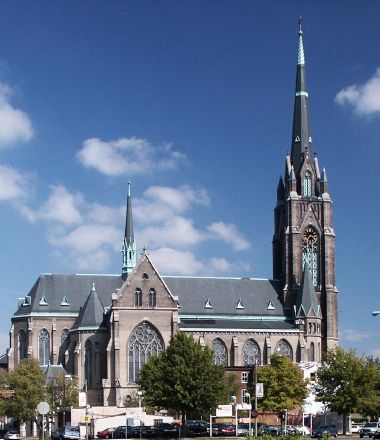
Then there is the brilliant Oratory of St. Francis de Sales, currently in the care of the Institute of Christ the King. The Oratory has a rather Netherlandic feel to it; one could easily imagine it in Ghent or some such city. Or perhaps northern France.
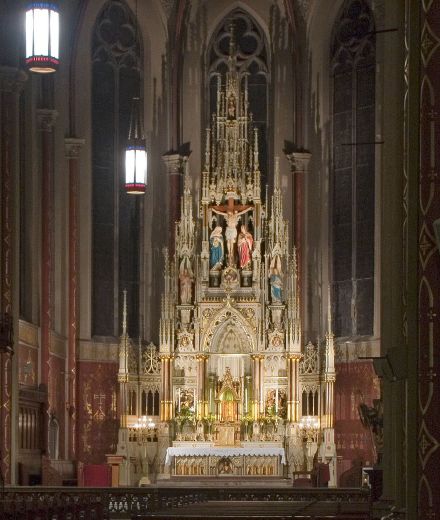
Above and below are two images (in night and day) of the high altar in the Oratory of St. Francis de Sales.

And finally, below, the Church of St. Roch in another Franco-Netherlandic gothic style.
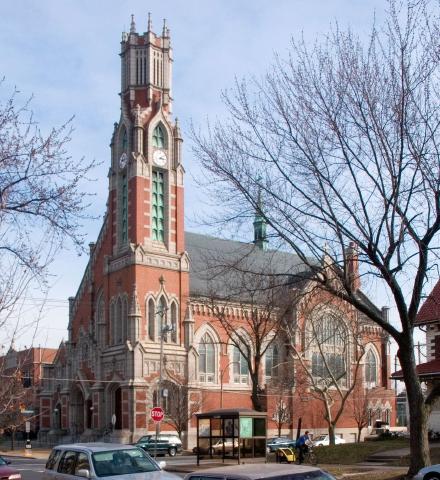
Search
Instagram: @andcusack
Click here for my Instagram photos.Most Recent Posts
- Sag Harbor Cinema March 26, 2025
- Teutonic Takeover March 10, 2025
- Katalin Bánffy-Jelen, R.I.P. March 3, 2025
- Substack Cusackiensis March 3, 2025
- In the Courts of the Lord February 13, 2025
Most Recent Comments
Book Wishlist
Monthly Archives
Categories



Great photos. Thanks for posting.
You must come for a visit Mr. Cusack, glad to show you around…Mr. Abeln does not mention it, but right across the river in Belleville is the largest cathederal in the state of Illinois…Very Catholic area, as you can see.
Mr. Cusack,
Thank you for displaying my photos on your excellent journal. I must admit that I learned a few things from your comments.
Perhaps Saint Louis’ character is due to it being the last colonial city founded in North America, and hence, having the most recent memory of European empire. We still have many Desloges and Cervantes running around here. Throughout its history, up to today, its European blood has been refreshed by new immigrants, all requiring their own churches with priests who speak their native tongue.
The name “Rome of the West” comes from its polyglot past, and also from the fact that it was the archdiocese for half of the U.S., as well as the source of many missionaries from numerous religious orders.
Notably, Catholics in Saint Louis never felt alienated from their cities (like, for example, Catholics in Boston), and so did not feel the need to “Americanize”; they did not take well to the reforms after the Second Vatican Council. Catholicism here is fairly traditional.
Mr. Seal is correct about the great Catholicity of the Illinois side of the Mississippi River. I have been negligent in not visiting more often, and I and my camera have not been graced with the gift of bilocation.
Beware of visiting Saint Louis, though, for many East Coasters came and never left, much to their shock.
As a Pennsylvanian transplanted to Ohio, I quite agree. The midwest is full of surprises.
Other beauties can be found in my area, Indianapolis, Indiana:
Sacred Heart Catholic Church. (Photos here; scroll down a bit)
St. John’s Catholic Church, the oldest Catholic Church in Indianapolis. (Photos here)
Wonderful photos. It’s nice to see that the Institute of Christ the King has a large and splendid building for their use.
and Kokomo, IN too:
http://www.stpatrick-kokomo.org/home.htm
The “renovation” pictures show the restored interior.
Gosh!
Good to be Archbishop of St. Louis!
And the post couldn’t be held by a better man. Blest indeed.
The architecture of St. Louis Abbey notwithstanding, the community has experienced a modest growth in vocations and has remained fairly orthodox.
England misses you, Cusack!
Thanks for the nice pics and write-up of our fair city’s Catholic churches. I am a parishioner at St. Stephen Protomartyr, located in south St. Louis. (www.saintstephenstl.org) Ours is a more modern-style church. Within our parish, however, we maintain the Chapel of Sts. Mary and Joseph (http://www.saintstephenstl.org/ssmj/ssmj.shtml) , which has a very rich history and may provide additional information to those who wish to learn a bit about St. Louis Catholic history.
Thank you for posting these photos.
I spent a month in St. Louis (I live in Korea) last year while my daughter underwent medical treatment. I had entrusted her to the Blessed Virgin, and felt comforted by a giant billboard that greeted us driving into the city from the airport: “OUR LADY OF GUADALUPE, EMPRESS OF ALL THE AMERICAS.”
St. Louis is a beautiful city with wonderful people.
I just returned from St. Louis where I attended the convention of the Latin Liturgy Association. We toured a number of churches and was impressed with their beauty and scale. The Cathedral was impressive beyond belief and could rank as the most spectacular one in the United States. Our concluding Mass was at St. Francis De Sales, now staffed by the Institute of Christ the King. Archbishop Burke celebrated a Tridentine Solemn High Mass.
YOu’re making me feel better about moving back here (IL side) from the Arlington, VA diocese.
Anyone visting St. Louis, be sure not to miss the spectacular shrine of St. Joseph to the north of downtown. My wife and I prefer it even to the cathedral basilica.
“Anyone visting St. Louis, be sure not to miss the spectacular shrine of St. Joseph….”
Here are some photos of the Shrine.
You would be interested maybe in visiting the many old churches in San Francisco, many founded in the 19th century, Old St. Mary’s, St. Boniface, St. Ignatius, St. Paul to name but a few. Evidence of the settlement of the city by Irish, Italians and others in the 19th cent.
Thanks for this posting. As a new Catholic, soaking up all the beauty in Cathedrals and shrines I can find after 35 years as a Baptist, I say a hearty AMEN to this tribute to St. Louis.
The Cathedral is breathtaking, and appropriately so, drawing us into a sense of the awe we should feel toward God.
it’s so nice to see an out-of-towner so appreciate the sacred architecture of st. louis. thank you.